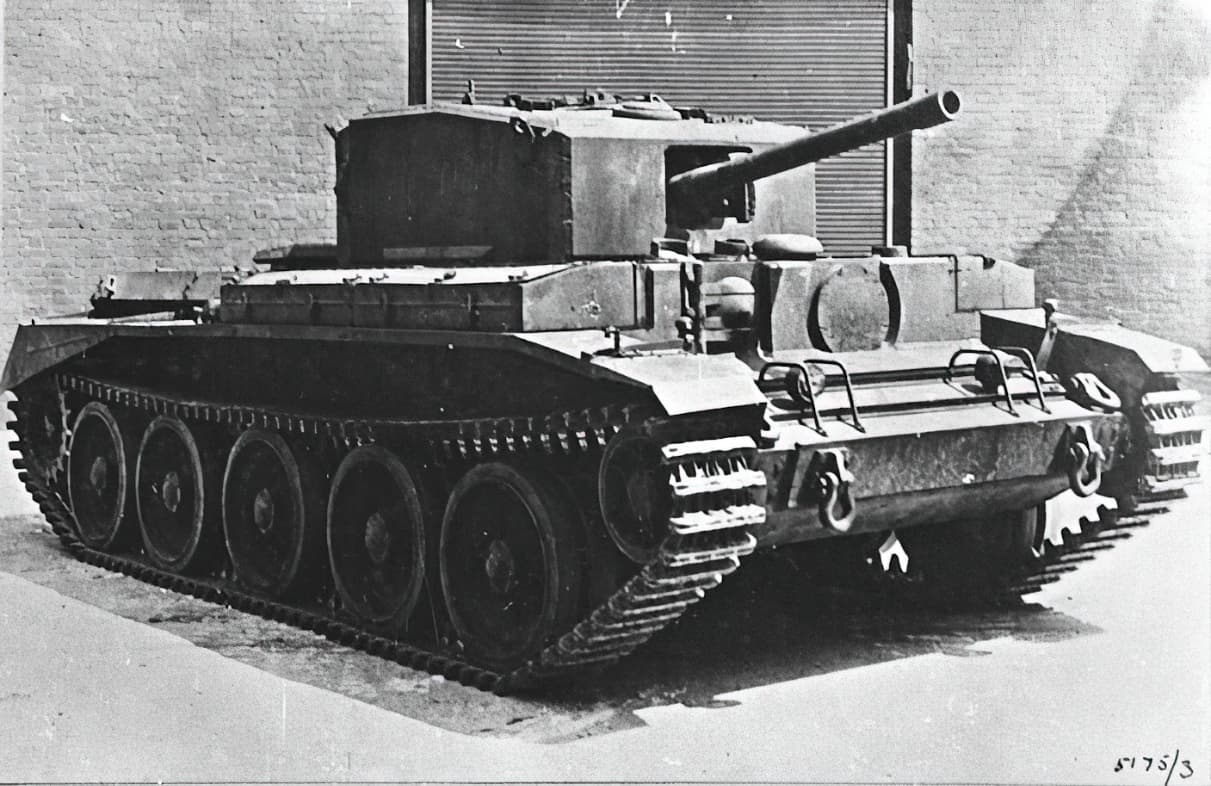- Yes
- No

Introduction
The development of the Heavy Cromwell began in 1943 as an effort to improve the armour and survivability of the Cromwell tank, which was still in development. Although initially conceived in 1940 and promised to surpass existing British tanks in armour, armament, and speed, the Cromwell’s entry into service was delayed by political interference, leadership instability, and prolonged debates over design elements like engines and welding methods until 1944. By this time, the tank was in danger of being obsolete from the moment it rolled off the production line, especially in terms of firepower and armour when compared to the latest German tanks.
Throughout these constant delays, some in the industry recognised the impending obsolescence of the tank, and efforts to improve the Cromwell’s armour were undertaken, with Rolls-Royce conducting trials in 1943 to increase the vehicle’s weight to 29 tons with increased hull and turret protection. Tests with thicker welded plates from Sheffield Steel proved successful, with 100mm+ of hull and turret armour, showing that the upgraded armour could withstand six-pounder rounds without significant penetration. Vehicle trials demonstrated that the added weight had little negative impact on performance, with the tank completing extensive road and cross-country tests without major mechanical failures, aside from minor wheel misalignments.
Unfortunately, despite the successful trials, most Cromwells entered service with standard armor configurations, and the lessons learned weren’t widely applied. The British quickly shifted focus to developing the Comet, which entered service just months after the Cromwell and provided a much more capable platform. As a result, the Cromwell was pushed to second-line duties within a year of entering service.
Specifications
Spoiler
- Crew: 4/5 (Commander, gunner, loader, driver, front gunner (bow machine gun removed))
- Armor Thickness: 102 mm
- Main Armament: 57mm Ordnance QF 6-pounder Mark III
- Secondary Armament: 7.92 mm Besa machine guns
- Engine: Rolls Royce Meteor
- Transmission: Merritt-Brown gearbox (5 forward, 1 reverse)
- Suspension: Improved Christie
- Speed: 64 km/h
- Range: 270 km (road), 130 km (cross-country)
- Fuel Capacity: 500 liters
- Weight: 29 tons
- Ground Clearance: 410 mm
- Number Built: 1 (prototype)
Images
Sources






